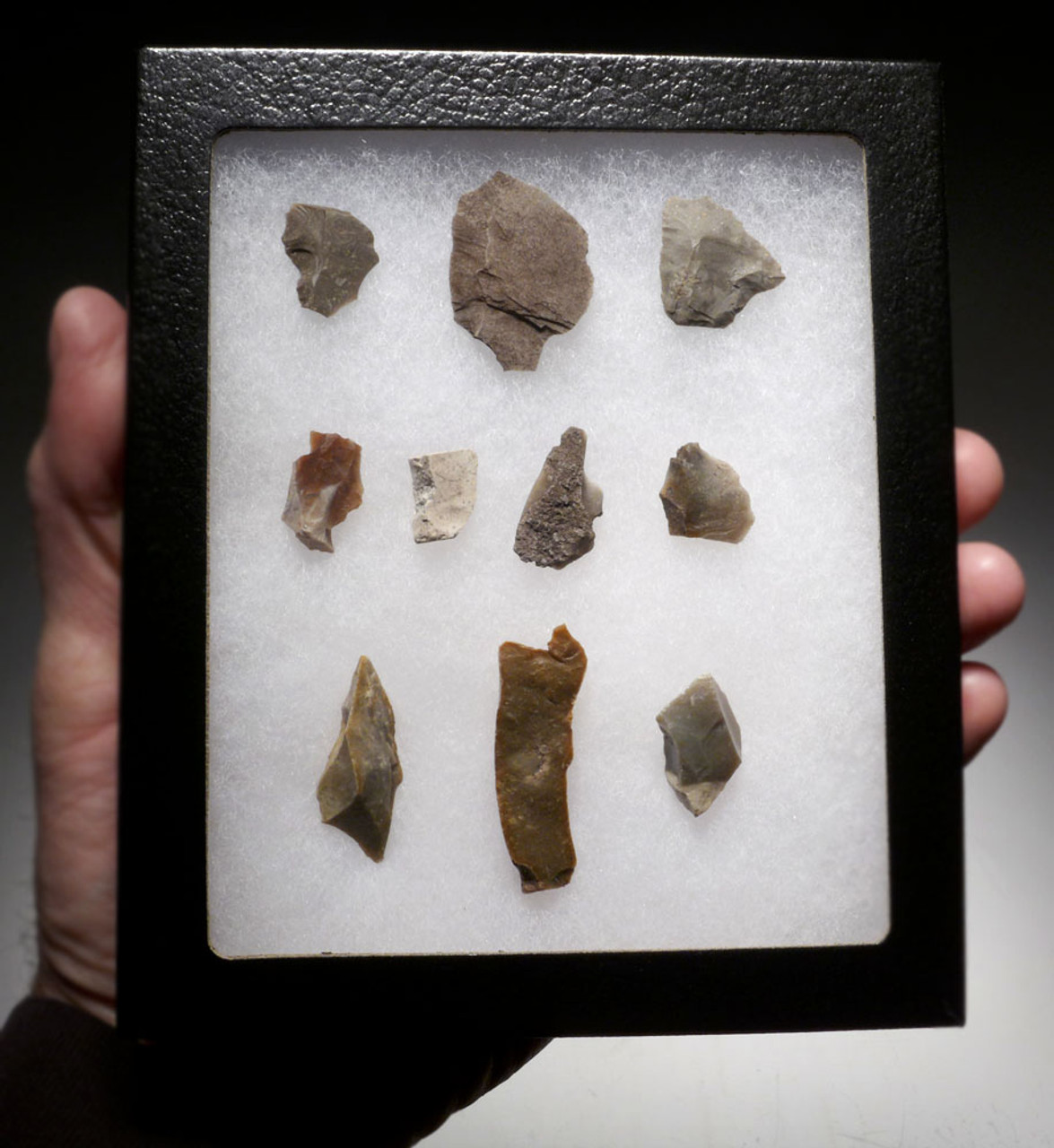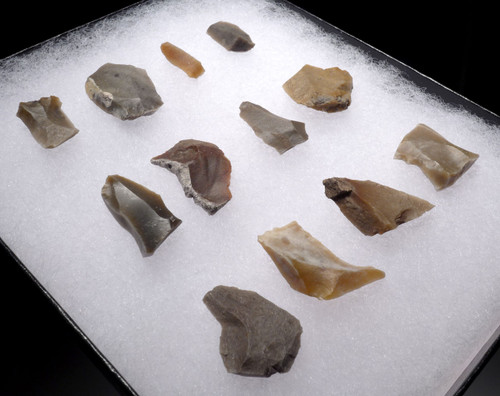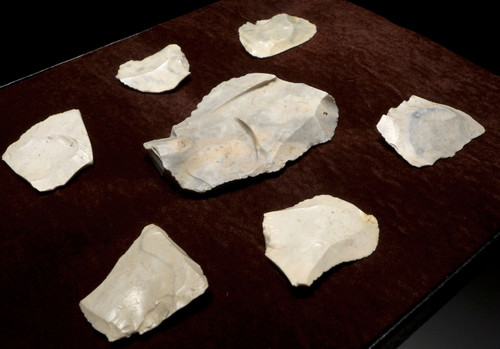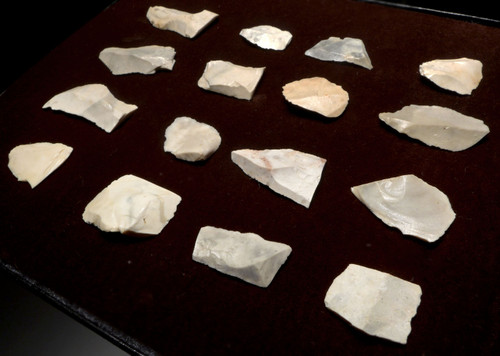Product Description
SEE MORE MESOLITHIC TOOLS AND ARTIFACTS
By the time the Mesolithic Tool Tradition arrived, the flake tools were highly advanced and achieved the peak of human tool miniaturization with the invention of the MICROBLADE. They were made by Western Hunter-Gatherer humans living in the region at the time. This rare set of 10 TEN Mesolithic micro-tools was collected from a former Mesolithic site in Lommel, Belgium, just 500 meters south of the border with the Netherlands. Various types are included in this set and each demonstrates the mastery of prehistoric human ingenuity and miniaturization of tool-making skills in the Mesolithic. You can see the expert shaping and flaking of microblades, microscrapers, and tiny prismatic blades. Microblades were the hallmark of the Mesolithic era as highly mobile hunter-gatherers in the final Ice Age, had to keep their tools and weapons small and mobile, allowing them to move with the herds they hunted that supported their survival.
Original ground minerals and sediment are still intact in hinge fractures - an indicator ONLY seen in AUTHENTIC specimens. This Mesolithic artifact set is a supreme example of the workmanship of a skilled HUNTER-GATHERER tool maker during Europe's final Ice Age.
HISTORY
The MESOLITHIC or EPIPALEOLITHIC tool tradition describes the time between the Upper Paleolithic and Neolithic. It is the final period of hunter-gatherer cultures in Europe and Western Asia, between the end of the Last Glacial Period and the Neolithic Revolution. In Europe, it spans roughly 15,000 to 5,000 BP.
The Mesolithic is a milestone in human history as it marks the final age of the hunter-gatherer. The dawn of farming and widespread animal husbandry that would follow, would usher in what will be the most transformational era of Man, the ability to abandon a nomadic life to follow herds or rely on nature, ending a mobile survival-like existence, to focus on the development of civilization and city-building.
The Mesolithic marks the highest refinement of the tool kit of the hunter-gatherer. As humans followed and hunted herds of animals, their tools had to become as mobile as possible. Here we have the full miniaturization of flake tools, something we saw starting to occur in the Upper Paleolithic. The extensive use of MICROBLADES was a hallmark of the Mesolithic. Microblade technology is a period of technological development marked by the creation and use of small stone prismatic blades which are produced by chipping silica-rich stones like chert, quartz, or obsidian. Microblades are a specialized type of lithic flake that are at least twice as long as they are wide. The blades were used in various tools and weapons as replaceable bladelets.
During the final Ice Age, hunter-gatherers suffered from shortage of food resources with increased human populations and depleted wild game herds. This required hunter-gatherers to move frequently and follow the herds they could locate. Microblade technology was suitable for high mobility and rapid weapon production, as well as reducing failure of hunting and lost or damaged weapons. Instead of replacing an entire tool or weapon, a microblade component could be removed and replaced, saving time and resources. Mesolithic hunter-gatherers invested more time acquiring better raw materials and developing the technique of miniaturized and advanced lithic manufacture and weapons.
 US DOLLAR
US DOLLAR
 EURO
EURO
 AUSTRALIAN DOLLAR
AUSTRALIAN DOLLAR
 CANADIAN DOLLAR
CANADIAN DOLLAR
 POUND STERLING
POUND STERLING
















